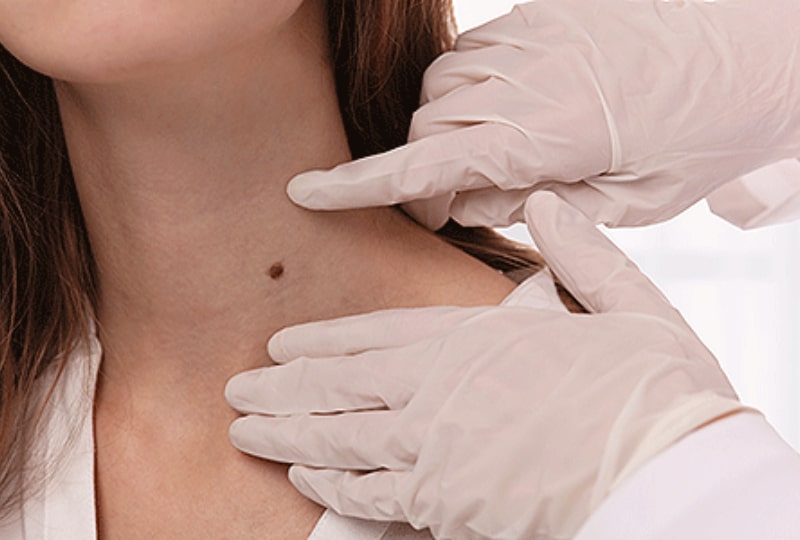Are you tired of dealing with pesky moles and skin tags? Do they itch, catch on clothing or simply make you feel self-conscious? If so, it’s time to consider seeing a dermatologist for removal. Not only can these growths be unsightly and uncomfortable, but they may also pose health risks. In this blog post, we’ll explore five compelling reasons why consulting a dermatologist is the best choice for safe and effective mole and skin tag removal. So let’s dive in!
What are Moles and Skin Tags?
Moles and skin tags are common growths that can occur on the skin. Moles can be either brown or black and are usually round or oval in shape. Skin tags are typically flesh-colored and are small, soft growths that hang off the skin. Both moles and skin tags are harmless, but they can be unsightly. If you have a mole or skin tag that you would like removed, a dermatologist can safely and effectively remove it.
Why You Should See a Dermatologist for Mole, Skin Tag Removal
If you have a mole or skin tag that you would like removed, it is best to see a dermatologist to have the procedure done. A dermatologist is a medical doctor who specializes in the diagnosis and treatment of conditions affecting the skin, hair, and nails.
There are several reasons why you should see a dermatologist for mole or skin tag removal:
- Dermatologists have the training and experience necessary to safely and effectively remove moles and skin tags.
- Dermatologists can determine if a mole or skin tag is cancerous or precancerous, which is important for preventing serious health complications down the road.
- Dermatologists can provide you with information about how to prevent moles and skin tags from returning in the future.
- Mole and skin tag removal are usually covered by health insurance, so seeing a dermatologist can save you money in the long run.
- Seeing a dermatologist for mole and skin tag removal can give you peace of mind knowing that the procedures are being done by a medical professional who has your best interests at heart.
Reasons to See a Dermatologist for Mole, Skin Tag Removal
There are many reasons why you might want to consider seeing a dermatologist for mole or skin tag removal. If you have a mole that is changing in size, shape, or color, it is important to have it checked out by a medical professional. Skin tags can also be unsightly and may cause discomfort if they are located in an area that rubs against clothing or jewelry. In some cases, moles and skin tags can be removed for cosmetic reasons.
Safety
If you have a mole or skin tag that you would like to have removed, it is important to see a dermatologist to have the procedure done. There are a few reasons for this:
Safety – Dermatologists are trained in how to safely remove moles and skin tags so that there is minimal risk of scarring or other damage to the surrounding skin.
Precision – Dermatologists can remove moles and skin tags with great precision, ensuring that only the desired area is affected.
Experience – Dermatologists have experience in dealing with all sorts of different moles and skin tags, so you can be sure that your case will be handled expertly.
Results
If you have a mole or skin tag that is bothering you, it is important to see a dermatologist for removal. Moles and skin tags can be removed for cosmetic reasons or to prevent further irritation. A dermatologist can determine the best method of removal for your individual situation.
Advantages of Professional Treatment
There are many advantages to professional treatment for mole and skin tag removal. First, a dermatologist is trained to identify different types of moles and skin tags and determine the best course of treatment.
Second, a dermatologist can provide you with a wide variety of options for mole and skin tag removal, including cryotherapy, laser surgery, and electrosurgery.
Third, a dermatologist can help you choose the best option for your particular case and ensure that the procedure is performed safely and effectively. fourth, a dermatologist can provide you with aftercare instructions to help you heal quickly and minimize the risk of infection or scarring.
Prevention of Complications
The best way to remove a mole, skin tag, or other growth is to see a dermatologist. Dermatologists are trained in how to remove these growths safely and effectively. They can also provide you with information on how to prevent these growths from coming back.
There are a few things you can do to prevent complications when removing moles, skin tags, or other growths:
See a dermatologist: Dermatologists are trained in how to remove these growths safely and effectively. They can also provide you with information on how to prevent these growths from coming back.
Follow the instructions: Be sure to follow your dermatologist’s instructions for care after the procedure. This will help ensure that the area heals properly and reduces the risk of infection.
Keep an eye on the area: Watch for any changes in the area where the mole, skin tag, or other growth was removed. If you notice anything unusual, be sure to see your dermatologist right away.
Proper Diagnosis
If you have a mole or skin tag that you would like removed, it is important to see a dermatologist to ensure that the growth is benign and does not require further treatment. A dermatologist can also provide you with the best options for removal, which may include surgical excision, cryotherapy, or electrosurgery.
The Procedure For Mole and Skin Tag Removal
If you have a mole or skin tag that you would like to have removed, there are a few things you should know about the procedure. First, it is important to consult with a dermatologist to ensure that the mole or skin tag is benign and does not require further testing. Once it has been determined that the mole or skin tag can be safely removed, the dermatologist will numb the area with a local anesthetic. The actual removal process only takes a few minutes and is typically done using a scalpel. There may be some slight bleeding and discomfort after the procedure, but this can be easily managed with over-the-counter pain medication and ice packs. The recovery time from this procedure is usually brief, and you can expect to see some redness and swelling at the site of the removal which will subside within a week or so.
Aftercare Tips
If you’ve had a mole or skin tag removed by a dermatologist, congratulations! You’re on your way to having clear, healthy skin. Here are a few aftercare tips to help you heal quickly and prevent infection:
Keep the area clean and dry. Gently wash with soap and water and pat dry.
Apply an antibiotic ointment or cream if prescribed by your dermatologist.
Apply a bandage if needed. Change the bandage daily or as directed.
Protect the area from the sun by wearing sunscreen or clothing that covers the area.
Watch for signs of infection, such as redness, swelling, pain, or drainage from the wound. If you see any of these signs, call your dermatologist right away.
The decision to see a dermatologist for mole or skin tag removal is an important one, and it should not be taken lightly. We hope that this article has helped you understand the importance of having moles and skin tags removed by a qualified professional in a controlled setting. With the safety measures in place, you can rest assured knowing that your health is always being considered first. So if you have any concerns about changes in your skin, don’t hesitate to consult with your local dermatologist today!

